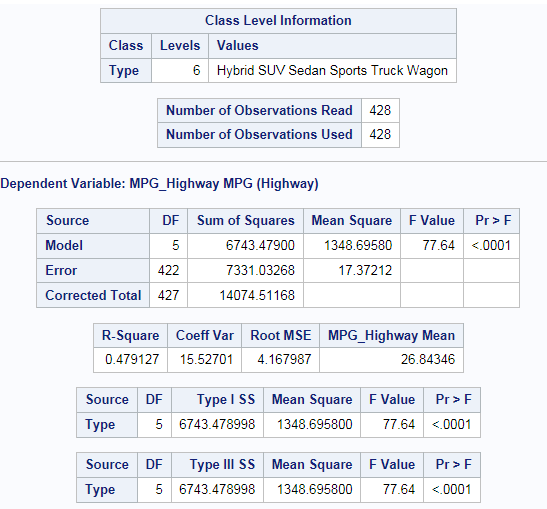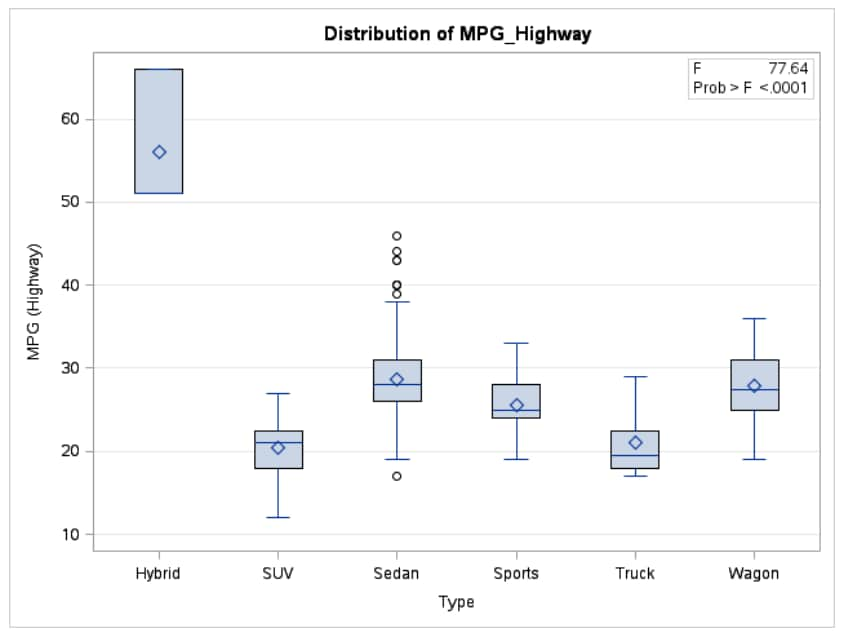One-Way ANOVA Task
About the One-Way ANOVA Task
A one-way analysis of
variance (ANOVA) considers one treatment factor with two or more treatment
levels. The goal of the analysis is to test for differences among
the means of the levels and to quantify these differences. If there
are two treatment levels, then this analysis is equivalent to a t-test
that compares two group means.
You might use the One-Way
ANOVA task to do the following:
Example: Testing for Differences in the Means for MPG_Highway by Car Type
Setting Options
Copyright © SAS Institute Inc. All rights reserved.


